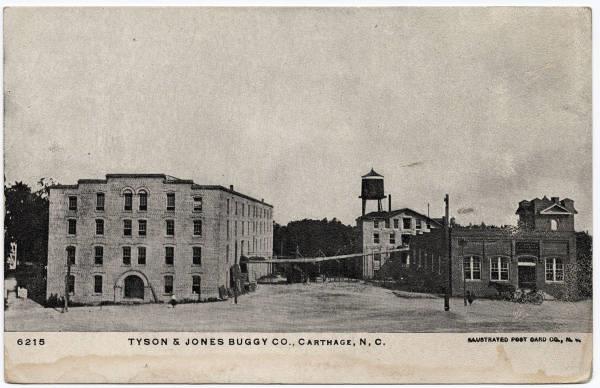Our History
 History of Carthage and our area...
History of Carthage and our area...
The tale of Carthage is the tale of courthouses. In the early days of our history Scottish immigrants trudged their way up the Cape Fear Valley reaching the Moore County area in the mid-1780s. These settlers found the perfect location for a new town on a high hill. They established their community and named it Fagansville after an early pioneer, Richardson Fagin. Moore County's first courthouse was built on Killetts Creek in 1785. Through the years, activities in Carthage have revolved around the courthouse and still do today.
Moore County was created by dividing Cumberland County on July 4th,1784. Since there was no incorporated town in the new county to serve as the county seat or locate the official courthouse, in 1796 a committee of the legislature selected a site in the center of the new county. The name given to the new courthouse site was Carthage, which was finally confirmed by the General Assembly in 1818. The remainder of the town was not laid out until 1803.
Ten years later in 1814, the courthouse was moved to the present location of the historic courthouse at the intersection of the main avenue of Carthage. Carthage is on a high commanding ridge, and the courthouse site marks the highest elevation in that part of the county, an altitude of almost 900 feet. The 1814 courthouse was made of wood and was called The Red House. In 1837 the floor of The Red House collapsed, and a third courthouse had to be built. This one was made of brick. In 1889 even though this third courthouse was brick, it burned destroying many valuable papers and documentation of the county's early history. Within a year the fourth courthouse, also of brick, was built. The fourth courthouse was replaced in 1922 with the large building in the center of the town that stands today and we call the historic courthouse. Moore County's sixth county courthouse and government building was erected across the street leaving the historic courthouse standing in the middle of the circle. Today both the fifth and sixth courthouses serve as government offices and court facilities.
Carthage's growth from the 1850's - 1929 was due to its successful buggy manufacturing industry. In 1856, two leading citizens of Moore County, Thomas Tyson and Alexander Kelly, decided to buy a small wheelwright business. The long-term economic impact of this event was not known at the time, but in a short time the town could see that the business of these two gentlemen was going to be profitable. Tyson and Kelly transformed the wheelwright shop into one of the most well known carriage factories in the United States. The company evolved into the Tyson and Jones Buggy Company. This major Carthage enterprise remained the largest factory in Moore County far into the 20th century. The factory reached its peak in 1890 turning out about 3,000 vehicles a year. The Tysons and Jones Buggy Company earned the reputation for producing the "Cadillac of carriages."
The horse-drawn buggy factory brought property to Carthage that is still apparent today when looking at many of the old homes around the town. The advent of the automobile spelled the doom of the buggy company. The last buggy was delivered in 1925 to Neil S. Blue of Raeford.